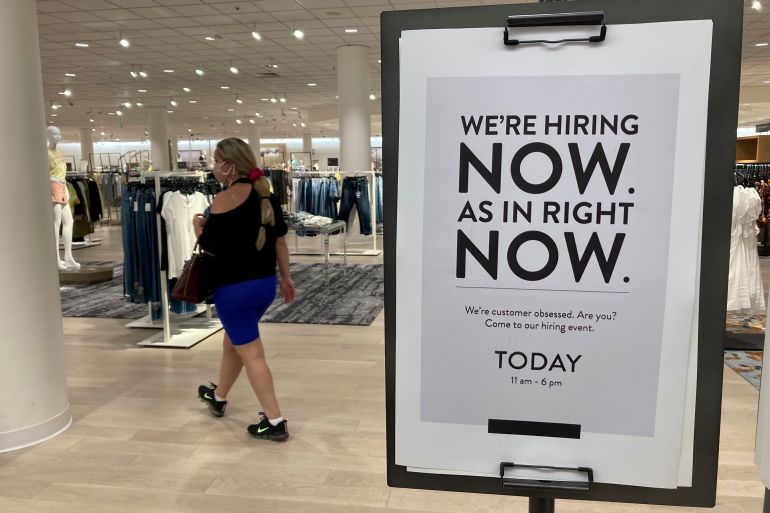From housing to layoffs, the US economy is in full rebound mode
Weekly jobless claims in the US just hit a new coronavirus pandemic low, while the nation’s housing market is so hot that the supply of more affordable single-family homes is not keeping up with demand.

Weekly jobless claims in the United States just hit a new pandemic low, while the nation’s housing market is so hot that the supply of more affordable single-family homes is not keeping up with demand.
Welcome to an economy in full-on rebound mode.
Keep reading
list of 4 itemsIndia arrests four for duping young men into fighting for Russia in Ukraine
A good, steady job? India election turns spotlight on a dream gone sour
Jobless engineers, MBAs: The hidden army of Indian election ‘consultants’
The latest batch of data confirming as much dropped on Thursday. The US Bureau of Labor Statistics said the number of Americans filing for unemployment benefits with states fell by 38,000 last week to 406,000 – the lowest reading in 14 months.
A proxy for layoffs, weekly jobless claims have been trending steadily downward as increased coronavirus vaccination rates, restrictions rollbacks and consumers flush with government stimulus cheques help boost economic activity – to the point where many businesses are now saying that they are having a hard time finding workers to fill open positions.
Economists cannot agree on why so many jobs are going begging. Some believe the federal $300 weekly top-up to state unemployment benefits is acting as a disincentive for the jobless to accept low-paying positions.
At least 23 states have said they will stop federally funded unemployment benefits programmes next month.
But there are other factors at play. Many workers – particularly women – who were forced to leave their jobs to care for children during coronavirus pandemic closers are still wrestling with those obstacles to returning to work. Some jobless Americans also fear returning to work before the pandemic is fully under control.
Meanwhile, the latest reading on the nation’s housing market from the National Association of Realtors (NAR) showed that pending homes sales fell 4.4 percent in April. The slowdown in contract signings is not because the market is cooling. Instead, the supply of more affordable single-family homes is not keeping up with demand.
“The upper-end market is still moving sharply as inventory is more plentiful there,” said NAR’s Chief Economist Lawrence Yun.
Also on Thursday, the US Department of Commerce said the nation’s economy grew at annualised rate of 6.4 percent in the first three months of the year. The revised reading on first-quarter gross domestic product, which measures the total output of goods and services, was unchanged from the department’s initial reading.
Many economists are calling for the nation’s economic growth to top 10 percent in the second quarter, but the latest reading from the Atlanta Federal Reserve’s GDPNow tracker sees the economy growing at an annual rate of 9.1 percent.